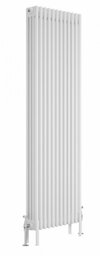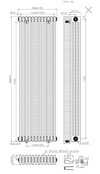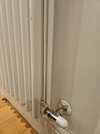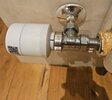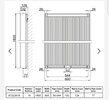Hi All
I'm looking to swap my two column vertical radiator for a 4 column one, as it's the only one to cover both the kitchen and living room area.
The one now has a width if around 550mm (including the valve areas) and new one is 560mm wide, so should swap over easily enough size wise, hopefully?
The only issue is the depth. The copper pipe comes out the wall to roughly the right amount for a 2 column radiator, not a 4.
If I needed to add another 20mm or so to the length of the pipe coming out the wall, is there any sort of extension I could add to the TRV to do this?
I have added some pictures of the current TRV's and the new radiator I am looking to purchase.
Also, in terms of whether the boiler can handle it, is there a simple enough way to work this out? I use TRV's and never have all the radiators on the house on at once. So if it could handle them all at once technically, I'm hoping it shouldn't be an issue if I had this one and one other upstairs, for example.
Thanks for any advice!
I'm looking to swap my two column vertical radiator for a 4 column one, as it's the only one to cover both the kitchen and living room area.
The one now has a width if around 550mm (including the valve areas) and new one is 560mm wide, so should swap over easily enough size wise, hopefully?
The only issue is the depth. The copper pipe comes out the wall to roughly the right amount for a 2 column radiator, not a 4.
If I needed to add another 20mm or so to the length of the pipe coming out the wall, is there any sort of extension I could add to the TRV to do this?
I have added some pictures of the current TRV's and the new radiator I am looking to purchase.
Also, in terms of whether the boiler can handle it, is there a simple enough way to work this out? I use TRV's and never have all the radiators on the house on at once. So if it could handle them all at once technically, I'm hoping it shouldn't be an issue if I had this one and one other upstairs, for example.
Thanks for any advice!


